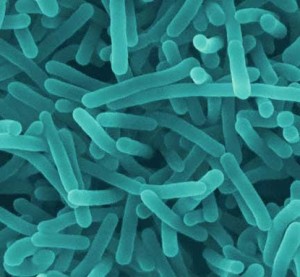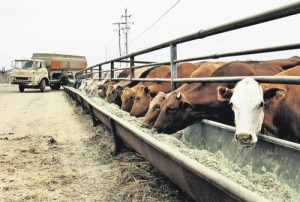Nearly half of foodborne illnesses in the U.S. from 1998 through 2008 have been attributed to contaminated fresh produce. Prevention and control of bacterial contamination on fresh produce is critical to ensure food safety. The current strategy remains industrial washing of the product in water containing chlorine.
(an effective on-farm food safety program helps)
 However, due to sanitizer ineffectiveness there is an urgent need to identify alternative antimicrobials, particularly those of natural origin, for the produce industry.
However, due to sanitizer ineffectiveness there is an urgent need to identify alternative antimicrobials, particularly those of natural origin, for the produce industry.
A team of researchers at Wayne State University have been exploring natural, safe and alternative antimicrobials to reduce bacterial contamination. Plant essential oils such as those from thyme, oregano and clove are known to have a strong antimicrobial effect, but currently their use in food protection is limited due to their low solubility in water. The team, led by Yifan Zhang, Ph.D., assistant professor of nutrition and food science in the College of Liberal Arts and Sciences, explored ways to formulate oil nanoemulsions to increase the solubility and stability of essential oils, and consequently, enhance their antimicrobial activity.
“Much of the research on the antimicrobial efficacy of essential oils has been conducted using products made by mixing immiscible oils in water or phosphate buffered saline,” said Zhang. “However, because of the hydrophobic nature of essential oils, organic compounds from produce may interfere with reducing the sanitizing effect or duration of the effectiveness of these essential oils. Our team set out to find a new approach to inhibit these bacteria with the use of oregano oil, one of the most effective plant essential oils with antimicrobial effect.”
Zhang, and then-Ph.D. student, Kanika Bhargava, currently assistant professor of human environmental sciences at the University of Central Oklahoma, approached Sandro da Rocha, Ph.D., associate professor of chemical engineering and materials science in the College of Engineering at Wayne State, to explore options.
“In our research, we discovered that oregano oil was able to inhibit common foodborne bacteria, such as E. coli O157, Salmonella and Listeria, in artificially contaminated fresh lettuce” said Zhang. “We wanted to explore the possibility of a nanodelivery system for the oil, which is an area of expertise of Dr. da Rocha.”
The team initially considered the use of solid polymeric nanoparticles for the delivery of the oil, but da Rocha suggested the use of nanoemulsions.
“My team felt the use of nanoemulsions would improve the rate of release compared to other nanoformulations, and the ability of the food grade surfactant to wet the surface of the produce,” said da Rocha. “We were able to reduce L. monocytogenes, S. Typhimurium, and E. coli O157 on fresh lettuce. Former Ph.D. student Denise S. Conti, now at the Generics Division of the FDA, helped design the nanocarriers and characterize them.”
The team added that while there is still work to be done, their study suggests promise for the use of essential oil nanoemulsions as a natural alternative to chemicals for safety controls in produce.
“Our future research aims to investigate the antimicrobial effects of essential oil nanoemulsions in various combinations, as well as formulate the best proportions of each ingredient at the lowest possible necessary levels needed for food application, which ultimately will aid in maintaining the taste of the produce.”
More information: The study, “Application of an oregano oil nanoemulsion to the control of foodborne bacteria on fresh lettuce” appears in the May 2015 issue of Food Microbiology. www.sciencedirect.com/science/article/pii/S0740002014002676



 drugs, cosmetics, and other products.
drugs, cosmetics, and other products. substance is covered by an existing food additive regulation). A food substance is one that is added to food or to food packaging for purposes that include improving taste, texture, or shelf life.
substance is covered by an existing food additive regulation). A food substance is one that is added to food or to food packaging for purposes that include improving taste, texture, or shelf life.